Ombre for medium hair: features and technique

Monochrome dyeing has sunk into oblivion and now, at the peak of its popularity, complex, but color-rich hair coloring. One of these relatively simple, but at the same time popular techniques is ombre. It is also worth noting the fact that few people today decide on long or too short haircuts - only medium-length hair remains relevant. It is about using the ombre technique on them and about other subtleties of this topic that we will talk about in this article.
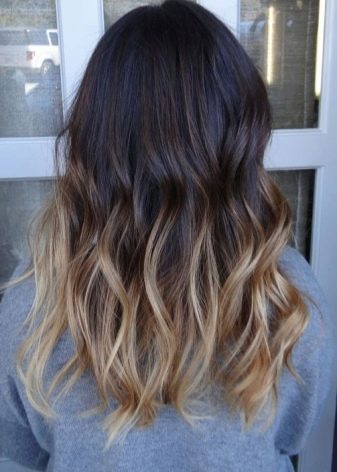
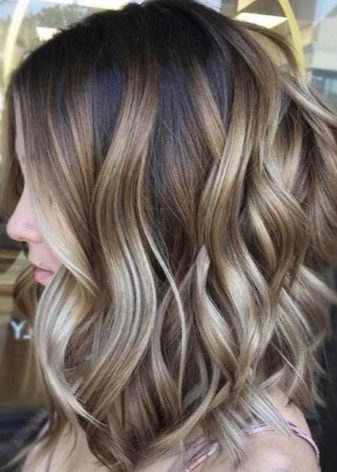
Peculiarities
Ombre is a special hair dyeing technique that uses multiple colors (from dark to light) to form a gradient. The main task of the master performing the ombre is create a 3D effect on hair.
In general, this color can be used on any hair, but application can be quite problematic for short curls. Medium hair length (just below the shoulders) is ideal for ombre.
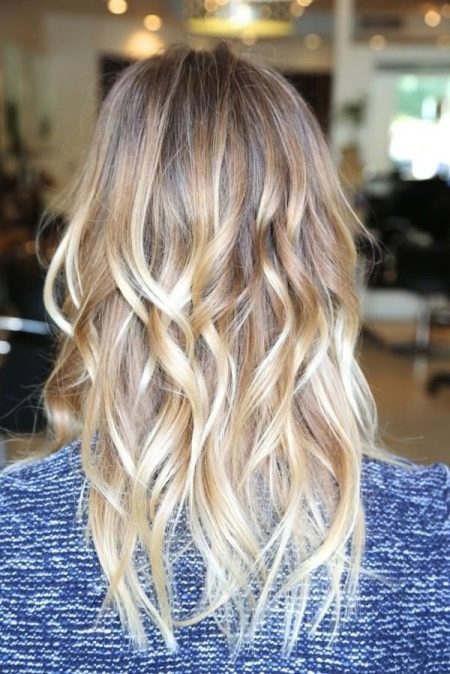
When choosing an ombre color, it is necessary to take into account the structure of the hair. For example, for very curly you can make an abrupt transition. This will make the curls look brighter and more accentuated. Professionals have noticed that it is from curly curls that any paint comes off the fastest. And here on straight hair the color transition must be done only gradually and use the whole palette of shades of the same color.
An interesting fact: ombre staining was first presented by French designers on the catwalk in 2011, but only 2 years later this technique gained its wild popularity. Translated "ombre" from the same French as "darkened".
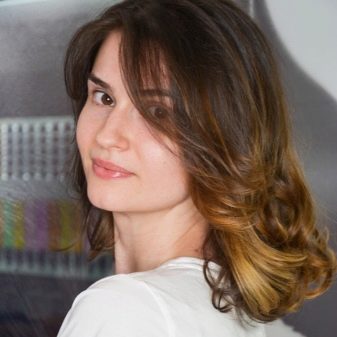
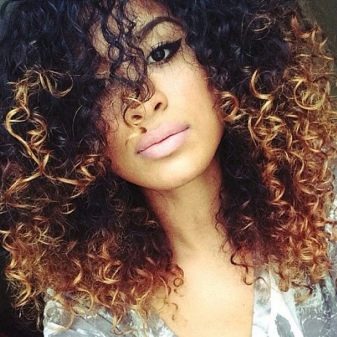
Advantages and disadvantages
There are many benefits to ombre.
- It may seem incredible, but such dyeing technique does not harm hair... When performing ombre, the hair roots are not damaged, which allows the hair to look healthy.
- Almost every ombre tends to rejuvenate its owner.
- Goes to everyone the fair sex.
- Improves complexion: brightens the skin. And in general, it gives the facial features and the image "airiness".
- Can be worn for a long time... Since only the ends of the hair are processed, even regrown hair can do without correction.
- Ombre can be done both on natural hair and dyed... An exception is hair dyed with henna or basma.
- Visually can improve condition of thin, thin hair with split ends.
- Ombre able to visually make the face a little narrower, especially for girls with a round oval face.
- Suitable for all hair types: straight, curly, curly, liquid, thick.
- Able to "refine" bright colours. In this regard, the ash ombre stood out, which can be given any shade: from blue to pink.
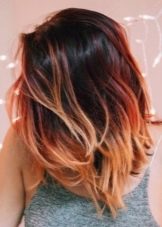



No matter how much the technique of performing the ombre has been improved, it still has a number of disadvantages.
- Difficulties with the search for a good master. It is rather difficult to make yourself a beautiful ombre on your own, and after the work of a good master you will be really surprised. Despite the large number of colorists and regularly held trainings and other courses, there are really good masters, as they say, "on one hand."
- There is a high probability that hair may turn yellow... This becomes an especially urgent problem for natural brunettes and brown-haired women.
- Difficult care after the procedure.
- Will not fit curls strongly burned out after applying other compositions. After the next lightening, such a head of hair may lose its ends - they will simply fall off.
- Can't do ombre on hair previously dyed with henna or basma. After the lightening procedure, the pigment from such hair may not be completely lightened. The result may be pinkish or greenish strands. In such cases, it is impossible to continue lightening, as the hair may completely burn out. The only option for such curls is ombre with dark shades. Later, the paint will be washed off, and it will be necessary to regularly tint so that the same pink or green color does not appear.
- Undesirable make an ombre using bright colors for girls with high oily scalp. Such coloring can accentuate the greasy roots.
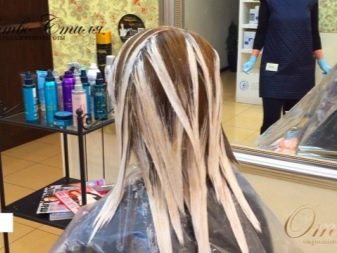
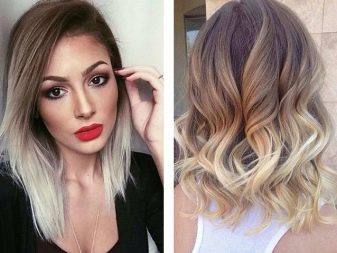
Summarizing all of the above, we can say that ombre has more advantages than disadvantages. Only care after the procedure and the work of a good master are important.
Views
During its existence, ombre has been "overgrown" with many species. Immediately worth noting classical ombre look. There is a gradual transition from dark roots to light tips.
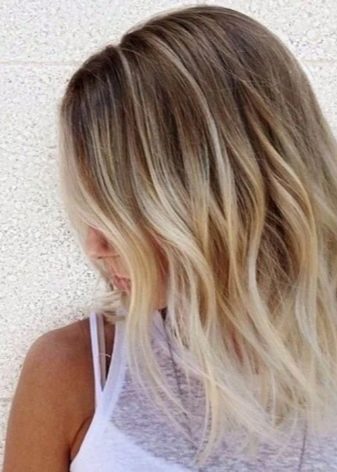
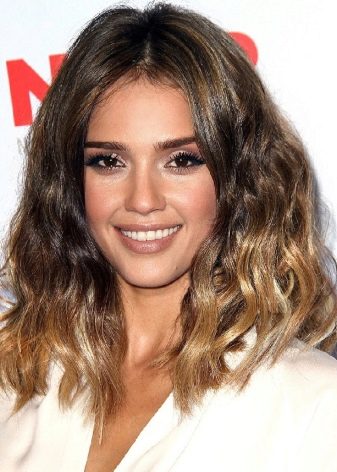
Another kind - extravagant... Its peculiarity is a sharp transition to a light color. Another distinctive feature of it is the use of shades and colors contrasting with natural hair. This also includes all bright colors such as blue, pink, red, green... Sometimes it can look unnatural, unlike the first option.
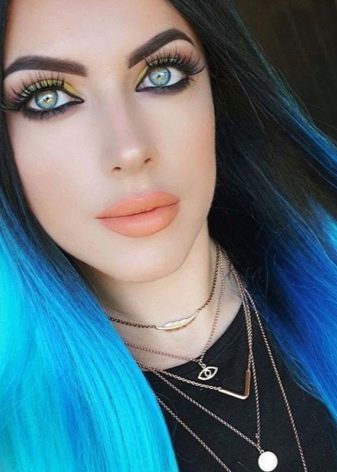
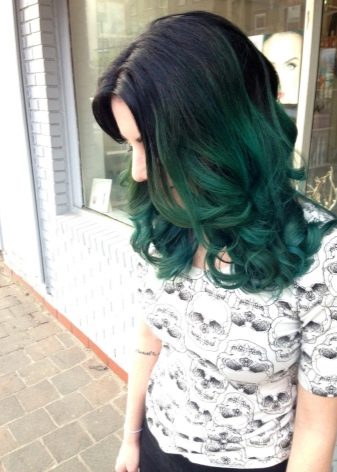
Another type of complex, but beautiful coloring - multidimensional ombre. Its main feature is the “overflow” effect. Hair in this technique can shimmer in several colors. A light curl can darken, and to the ends it can regain a light shade. The rule for choosing shades remains the same, as with any complex staining: you need to choose either a few warm shades, or a few cold ones.
Hair dyed using this technique looks alive, and the ombre itself is as natural and almost invisible as possible. Only in this process, foil is not used, while in all others, its use is mandatory.
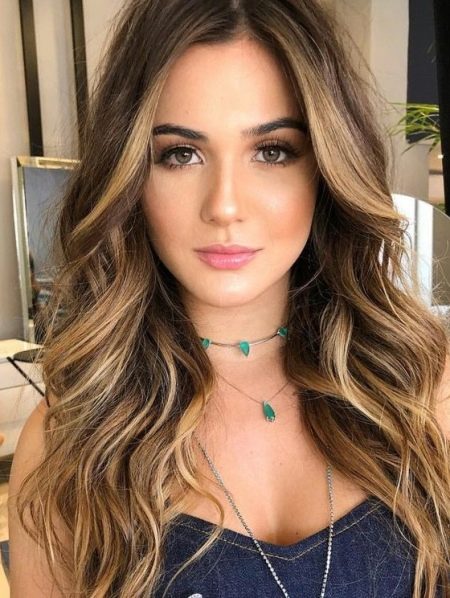
The next look, which came into fashion only this year, is "Tortoiseshell" ombre. The masters themselves describe it as a "multidimensional gradient" and draw an analogy with the tortoise shell, which combines many different iridescent shades and a peculiar variety of colors. With this coloring, up to 10 different colors can be used.
This technique looks best on light brown hair. The transition to lighter hair also occurs gradually, but closer to the ends several shades are mixed at once.
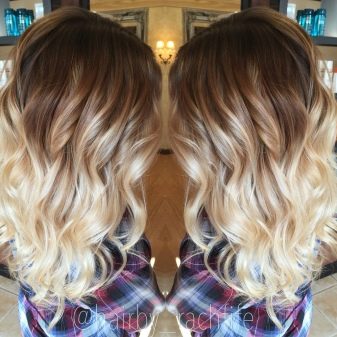
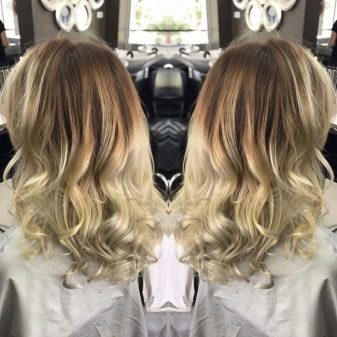
Another interesting option is armored ombre. Creates the effect of regrown roots. Most often, it is used by the owners of dark hair: brown-haired women and brunettes. This is exactly the way girls with dark hair become blondes without looking cheap.
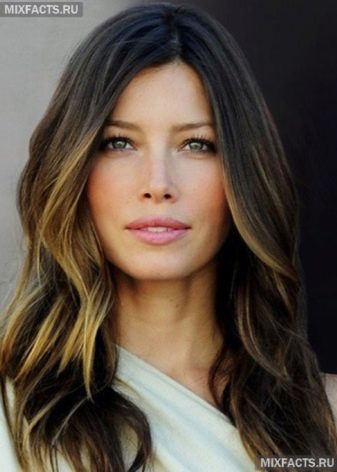
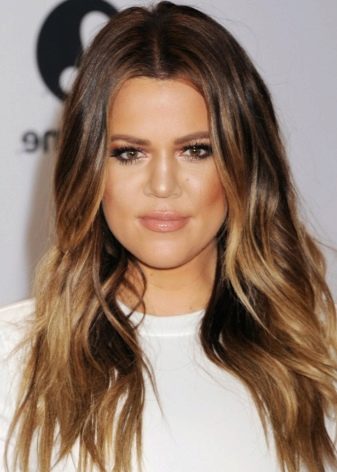
By the number of shades used, ombre can also be divided into several types.
- Degrade, which is also called in another way "Stretch color"... Only three shades are used here. There is a gradual transition from dark roots to light tips. The effect of sun-bleached hair is created.
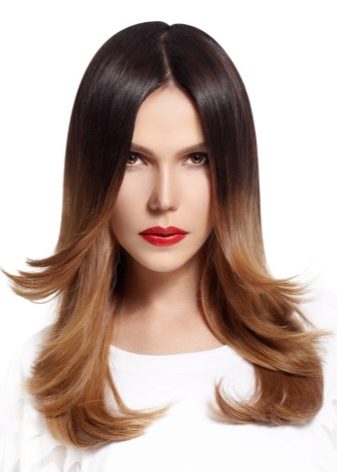
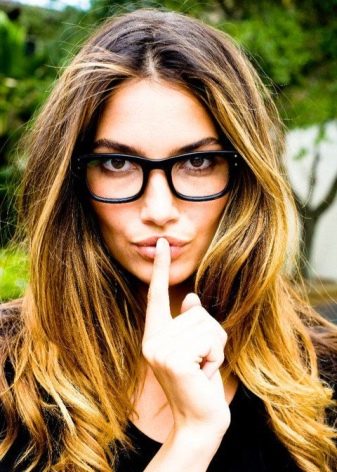
- Shatush... Such coloring has a clear border of transition to another color. This technique uses only two shades.
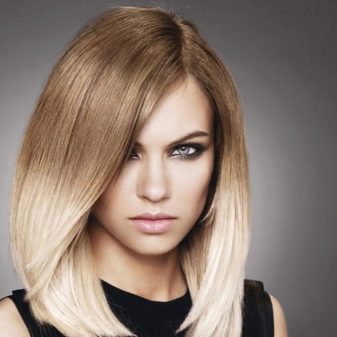
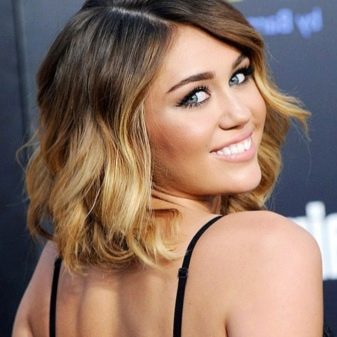
- Shadow Technique... Difficult staining. Despite the fact that only two basic tones are used, other colors are also added to them. The result is an overflow of a variety of different shades.
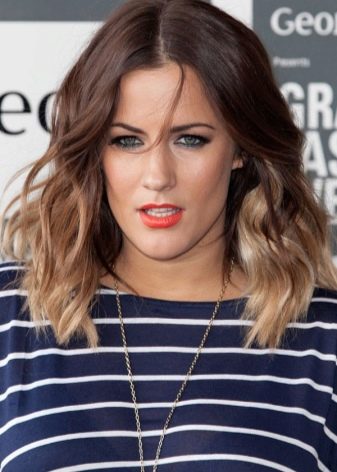
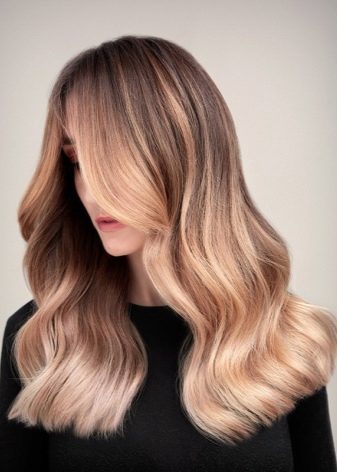
- The reverse ombre. With this coloring, the hair roots are made light, and a transition to a darker color goes to the ends of the hair. It is a rather eccentric paint job that does not suit everyone.
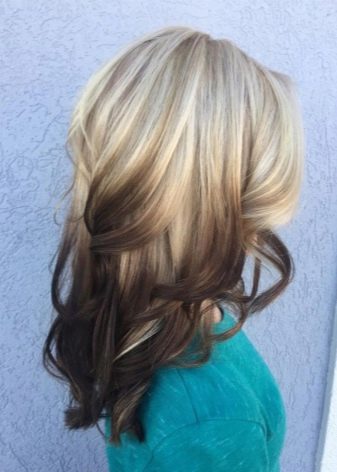
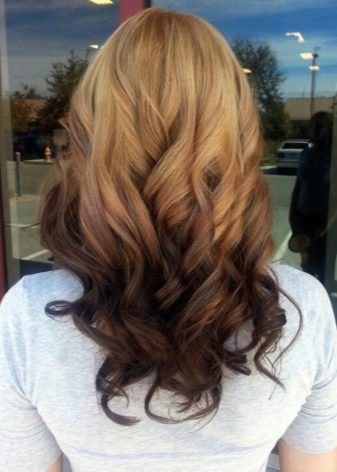
Color selection
It should be noted right away that in most cases it is worth giving preference to cold shades. They look a little more beautiful than warm ones. The most popular and versatile option for dark brown hair is a smooth transition to brown or caramel.
By the way, the advantage of chocolate hair is that a multitonal ombre will look great on them. It is a combination of many bright colors such as blue, pink, burgundy, marine. And all this will be harmoniously combined.
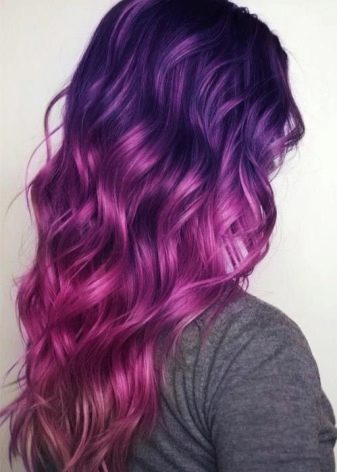
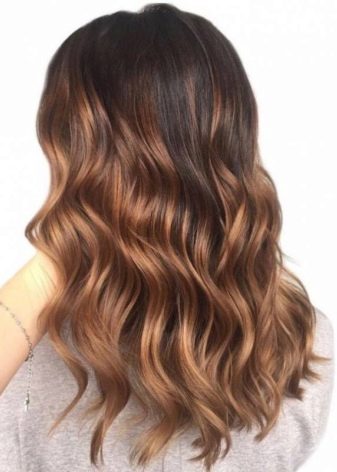
For owners blond curls it is best to opt for a blonde ombre color. It's better for girls to do the same. with streaked hair... Highlighted tinted strands will make the transition even smoother.
A small note: if the strands of the face are made light almost from the roots, then this will improve the image as a whole. Such curls give the effect of a "light" face and can even correct its irregular shape.
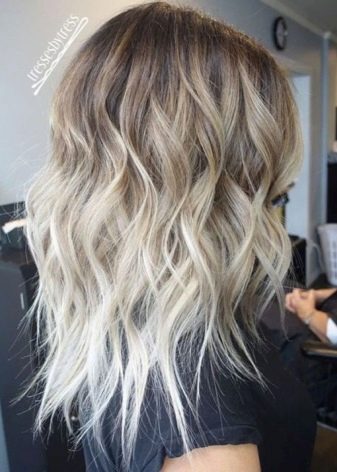
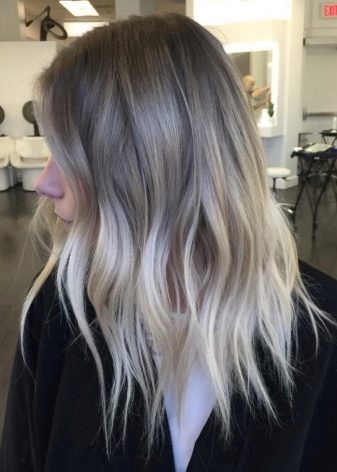
For brunettes however, with dark skin, it is best to choose gold or even red shades for the ombre. Brown-haired women you can choose light but cold shades of blond using the bronzed ombre technique. This technique is able to radically change the image from dark hair to light hair without severe damage to the image and the image as a whole.
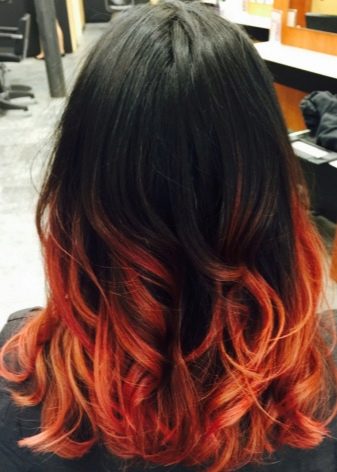
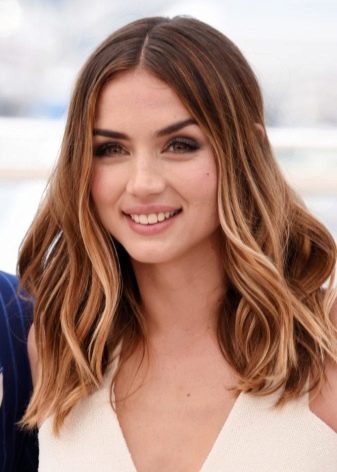
Ombre on fine hair can be "pushed down". Simply put, make only the tips light. This option will protect your hair from additional damage as much as possible.
Some colorists argue that the ombre color should be combined with the color of the eyes. This theory makes sense only if the girl's hair and eye color are different from each other. But before doing such a staining, it is worth consulting with your master individually.
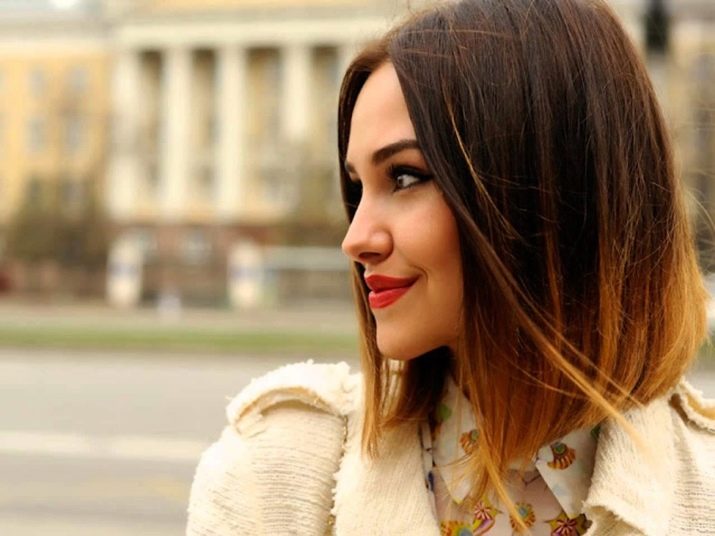
The best haircut for an ombre is cascade... It is he who will allow you to fully reveal all the variety of shades. Wavy curls will complete the look. Strongly curly dark hair is perfect for bright shades with a sharp transition.
In addition to loose hair, ombre can be worn with a hairstyle such as a braid. It will seem to "sparkle" with many shades.
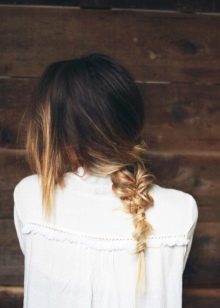
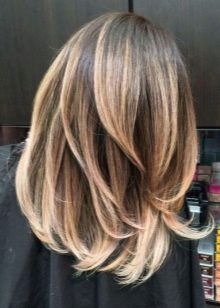
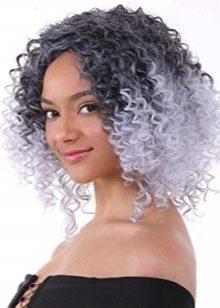
If you still could not decide on the color and do not know what suits you best: warm shades or cold shades, then stylists and hairdressers recommend the following a way to determine suitable shades for your color type:
- take silver foil and gold, apply each separately to your face;
- if, against the background of silver foil, the skin has become a little lighter, and the eyes brighter, then cold shades will suit you, and if on the contrary, then warm ones.

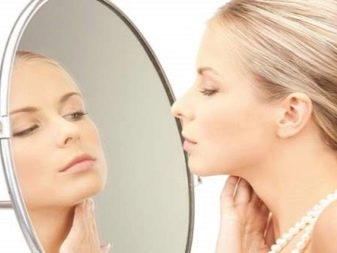
Dyeing technology
The work of each master is based on the usual ombre technique with clarification, aging in foil and subsequent paint application. But there are several more painting techniques that can be distinguished. A procedure that you can easily do with your own hands at home and which is at the same time the simplest is classic ombre... It is characterized by a sharp transition. In addition, it is possible to get by using only one color.
- Before starting the process, it is advisable do not wash your hair for three days... This will protect the hair with a natural barrier before dyeing. Another important point: the procedure is best done on straight hair. So you can control the process of applying the composition.
- Part your hair parting into two identical parts, and, in turn, also divide them in half.
- Anchor color transition line with rubber bands.
- Apply paint from the marked line to the ends of the hair. This is best done with a paint brush.
- Remove the rubber bands.
- Walk through your hair comb several times. This is done in order to evenly distribute the paint over the hair and make a smooth transition.
- Hold the paint on hair for 10 minutes. Depending on how bright the shade you want, leave the dye on your hair for as long. It is important not to overdo it - the maximum exposure time is 30 minutes. Otherwise, it may damage your hair.
- Wash your hair and apply a special balm.
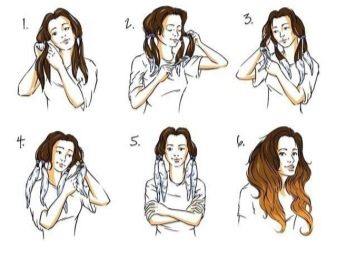
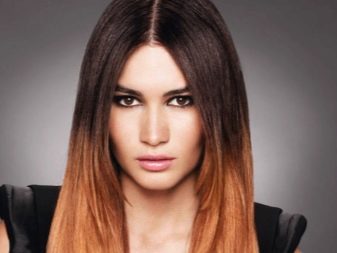
If you are the owner of dark hair, then before applying paint (toning) you will need to do an important preparatory procedure - clarification.
- Prepare clarifier... To do this, mix the powder and the oxidizing agent in equal proportions.
- Withstand clarifier on the hair for a certain time. It is not necessary to use foil at home. It can be used only when lightening curls near the face. Read about the exposure time in the instructions.
- Wash off the composition. The rest of the process is to dye your hair.
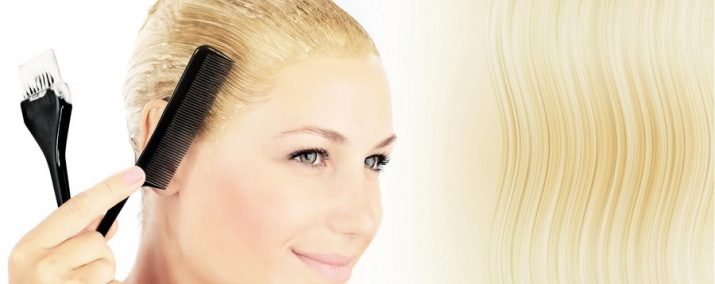
We have considered only a simplified technique for performing ombre. But if you want high-quality and complex painting, then you should contact a good master.
Care
- A good result as a care product after the ombre procedure was shown hair oils in capsules. They are applied to the ends of the hair immediately after shampooing or during the drying process. With these oils, you will not only moisturize and nourish your ends, but you will also notice that your hair is less tangled and silky soon after regular use.
- Helps to improve the condition of the hair and make it less dry various sprays.
- Of course, it is mandatory using shampoo with purple pigment... It fights the yellowness that later appears on the hair.
- For those who want to maintain their hair color, it is necessary to visit the master regularly for the toning procedure.
- To maintain the health of the hair after lightening, it is recommended to reduce the heat exposure as much as possible, that is, as little or at all as possible. do not use an iron, hair dryer, curling iron, heat rollers.
- Definitely need to use regenerating masks and balms.
- So that the strands do not burn out in the sun, you need to use products with UV protection.
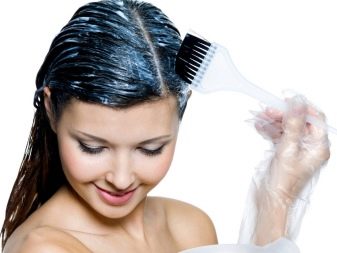
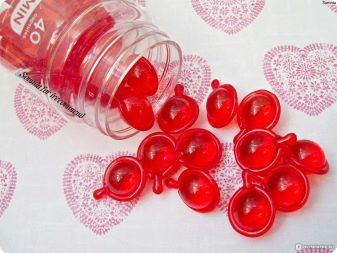
In general, the main thing in the care of dyed hair is regularity.
Successful examples
Almost a classic for the ombre technique has become a haircut. bob with lengthening at the face... Especially advantageous, in contrast to the honey or nut shade on the ends, will look ashy ends.
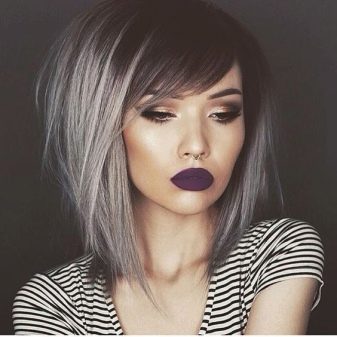
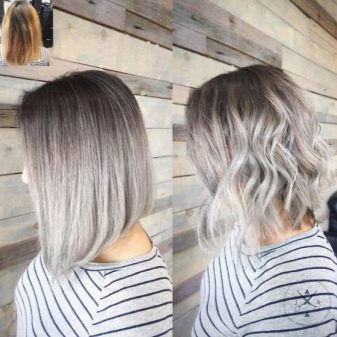
For those who have always wanted an unusual and vivid image, but did not dare, there is a way out - colored ombre. Pink, blue and purple colors have gained popularity. A similar playful option is the raspberry ombre.
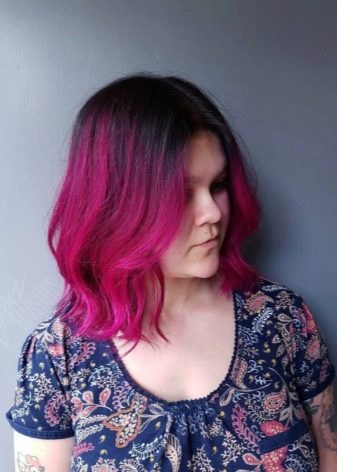
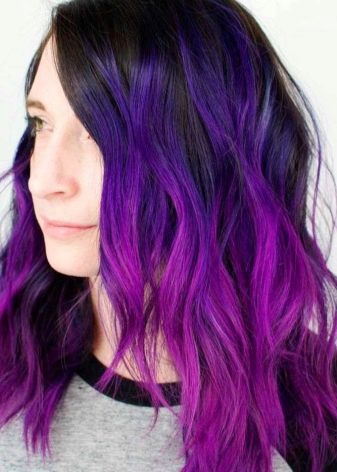
An incredible peak of its popularity is now experiencing ash ombre in different versions. It is best done on medium to long hair.
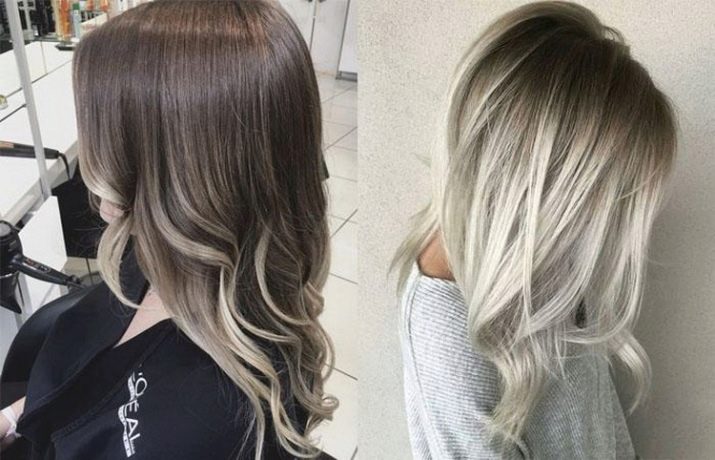
Ombre remains a classic on dark curls using light colors of cold shades.
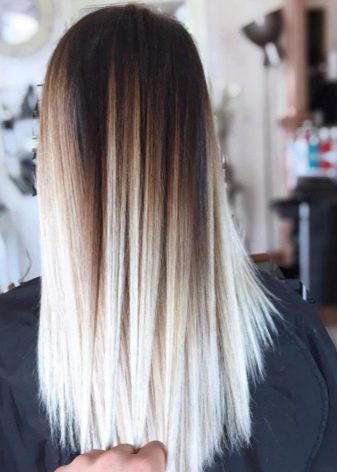
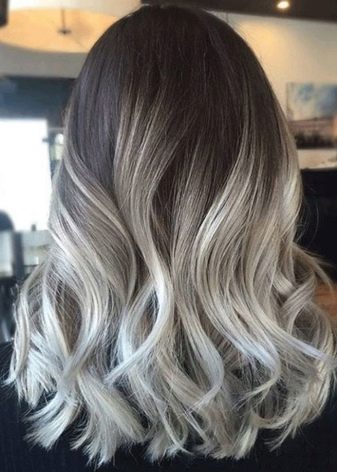
In conclusion, it is worth noting that if you want to make an ombre, then by all means do it, because this universal coloring will be popular for a very long time and will suit any hair of different lengths and structures.
For information on how to make ombre staining, see the next video.








